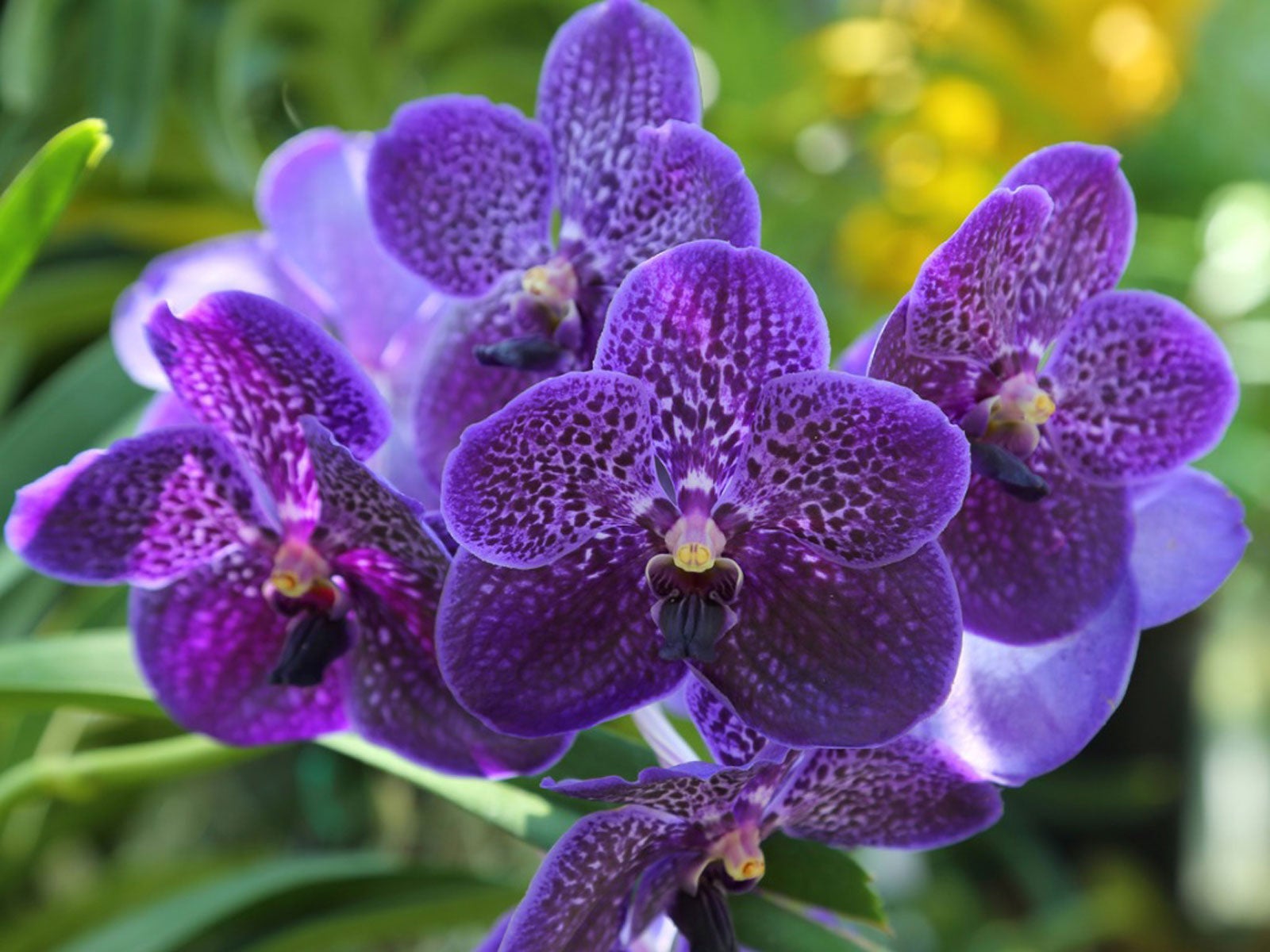Vanda Orchid Info: How To Grow Vanda Orchids In The Home


Vanda orchids produce some of the more stunning blooms in the genera. This group of orchids is heat-loving and native to tropical Asia. In their native habitat, Vanda orchid plants hang from trees in nearly soilless media. It is important to mimic this condition as much as possible when growing Vanda orchid. Care of Vanda orchids is simple, provided you remember a few key items regarding the orchid's preferences. Once you have the right growing situation, you can become skilled at how to grow Vanda orchids and enjoy large colorful blooms every few months.
Vanda Orchid Info
Orchids grow terrestrially or epiphytically. The family of Vanda orchids is all epiphytic, which means the plants cling to tree bark or hand from cracks in cliffs and rocky areas. This means their roots are in relatively little soil, just whatever organic matter the crevasse or crack collected over time. Vanda orchid plants bloom several times a year with 1 to 4 inch (3-10 cm.) blooms in a host of colors. Stems and flowers may be speckled or dappled with white. The foliage is thick and round, with a glossy waxy sheen. Plants range in size from miniatures to huge flora several feet (1 m.) tall.
How to Grow Vanda Orchids
Plants grow from thick fleshy bulbs, which store moisture and energy for the orchid's growth. They send out aerial roots that help them cling to their chosen perch and gather moisture from the air. The flower's importance as ornamental blooms and part of leis and other décor is a key bit of Vanda orchid info. In most climates, the plant is useful only as a houseplant because it has no cold tolerance. Breeders like the Vanda orchid for its ease of propagation and production of hybrids. It is an easy to care for plant with spires of thickly flowered stems that actually thrives on cyclical neglect.
Care of Vanda Orchids
As a warm climate plant, Vanda orchid plants require temperatures no lower than 55 F. (13 C.) and no higher than 95 F. (35 C.). Lighting is crucial, but first you have to determine what type of Vanda you have. There are strap-leaved, terete and semi-terete. The first variety is self explanatory, but terete has a round pencil-shaped leaf. Semi-terete is somewhere in between. Terete varieties need bright light and high sun. Strap leaves need partial shade and protection from bright midday light. Water the orchids enough to keep them moist but not soggy. Soggy plants tend to rot. You can prevent this by using a chunky bark medium or other gritty soil that doesn't hold onto moisture. Vanda orchid plants need 80 percent humidity, which may have to be provided by a humidifier or spritzing the air. Repot every three to five years in spring. Fertilize during the growing season. Feed once a week with a one-quarter dilution of balanced fertilizer as part of good care of Vanda orchids.
Gardening tips, videos, info and more delivered right to your inbox!
Sign up for the Gardening Know How newsletter today and receive a free copy of our e-book "How to Grow Delicious Tomatoes".

Bonnie Grant is a professional landscaper with a Certification in Urban Gardening. She has been gardening and writing for 15 years. A former professional chef, she has a passion for edible landscaping.
-
 4 Superfast Composting Methods: Turn Waste Into Garden Gold In 30 Days Or Less
4 Superfast Composting Methods: Turn Waste Into Garden Gold In 30 Days Or LessTry the fastest composting methods to turbocharge your pile and transform kitchen scraps and garden waste into finished compost in just a few weeks.
By Mary Ellen Ellis
-
 Best Spider Plant Soil – Complete Soil Guide And Expert Tips For Keeping Plants Happy
Best Spider Plant Soil – Complete Soil Guide And Expert Tips For Keeping Plants HappySpider plants are fun and easy plants to grow, but what is the best soil for a spider plant? Selecting the right soil is important so they can thrive.
By Bonnie L. Grant